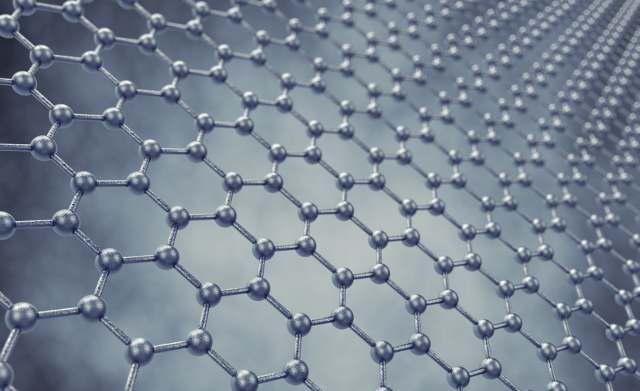The properties of an incredibly light and ultra-strong material called carbyne have only been theoretically predicted – until now. Synthesis of the material may actually be possible, according to new research from University of Alberta chemists.
“Carbyne has been predicted by theoretical studies to be stiffer and stronger than any currently known material – for example, three times stiffer than diamond and twice as strong as carbon nanotubes,” said Rik Tykwinski, professor and chair of the chemistry department in the Faculty of Science.
The finding comes in a pair of groundbreaking studies published in Nature Chemistry and Nature Communications.
Carbon atoms are studied based on their bonding and geometry, known as hybridization. Three-dimensional carbon atoms, more commonly known as the allotrope diamond, and two-dimensional carbon atoms, known as graphite, have been well studied for hundreds of years. But the allotrope from one-dimensional carbon atoms remains unknown.
“This would be carbyne, the unstable, one-dimensional form of sp-hybridized carbon,” explained Tykwinski. “Carbyne’s instability prevents its isolation and study, which requires clever alternatives to understand this material.”
Using chemical compounds called polyynes as a model, Tykwinski and his graduate student Yueze Gao created stable compounds for predicting the characteristics of carbyne.
“With stable molecules in hand, the spectroscopic and structural properties of carbyne can be predicted with unprecedented accuracy,” noted Tykwinski.
“These experimental studies play a vital role, as they allow us to confirm or refute theoretical predictions as well as extrapolate to potential uses. For example, while carbyne is not yet available, polyynes from this study have a structure that could model future applications for carbyne.”
The first paper, “The loss of endgroup effects in long pyridyl-endcapped oligoynes on the way to carbyne,” is published in Nature Chemistry. Collaborators on this study include graduate student Yuxuan Hou and Michael Ferguson, director of the X-ray Crystallography Laboratory in the U of A’s Department of Chemistry, as well as professor Juan Casado and graduate student Fernando Gordillo Gámez at the Department of Physical Chemistry at the University of Malaga in Spain.
The second paper, “Optical gap and fundamental gap of oligoynes and carbyne,” is published in Nature Communications. Collaborators on this study include Eike Jahnke, a post-doctoral fellow in Tykwinski’s lab; professor Dirk Guldi and graduate student Johannes Zirzlmeier at Friedrich-Alexander-Universität Erlangen-Nürnberg (FAU) in Germany; and Clémence Corminboeuf, Laurent Vannay, Éric Brémond, Professor Holger Frauenrath, Stephen Schrettl and Jan C. Brauer at Emmanuel Contal at Ecole Polytechnique Fédérale de Lausanne in Switzerland.
| By Katie Willis
This article was submitted by the University of Alberta’s online publication Folio, a Troy Media content provider partner.
The views, opinions and positions expressed by columnists and contributors are the author’s alone. They do not inherently or expressly reflect the views, opinions and/or positions of our publication.



